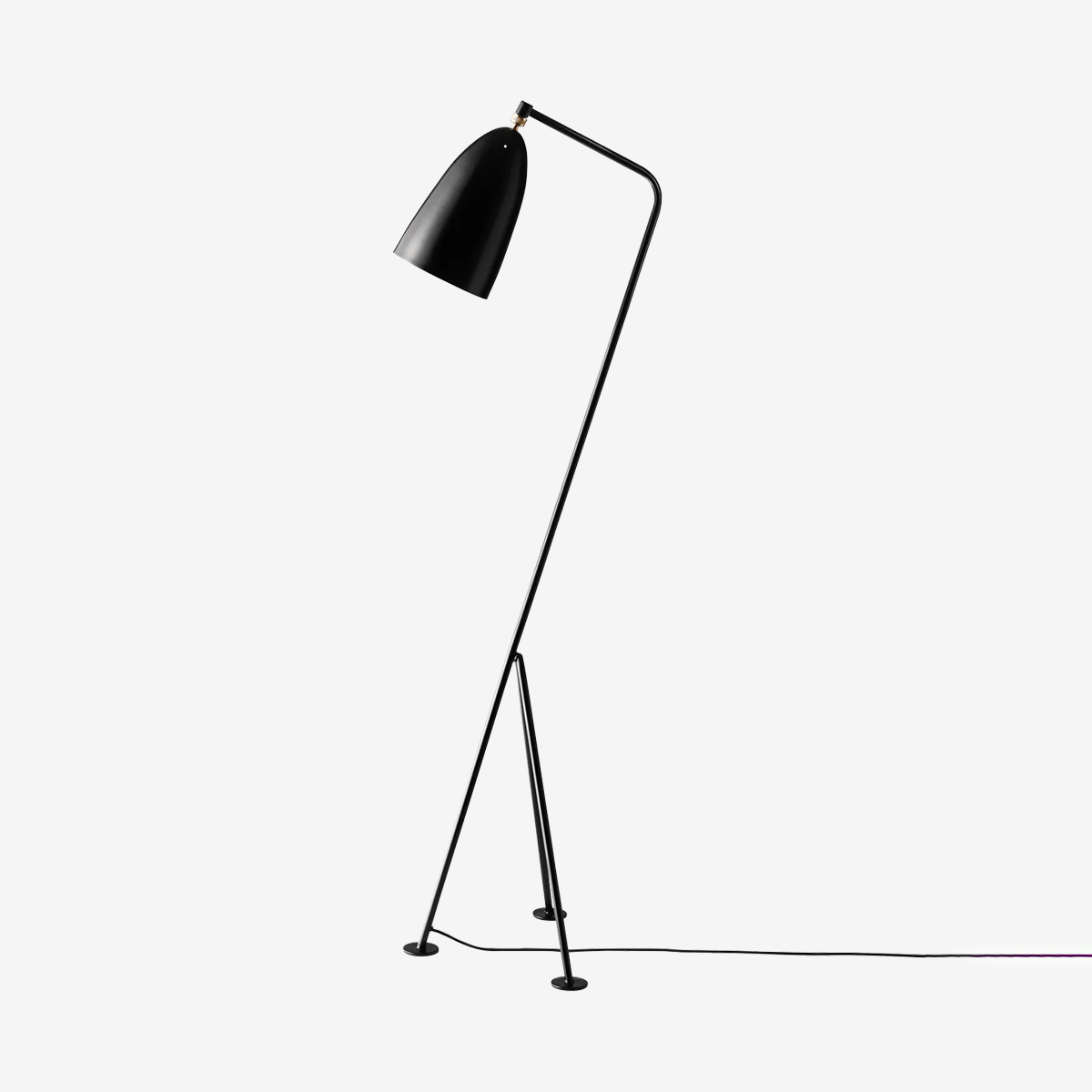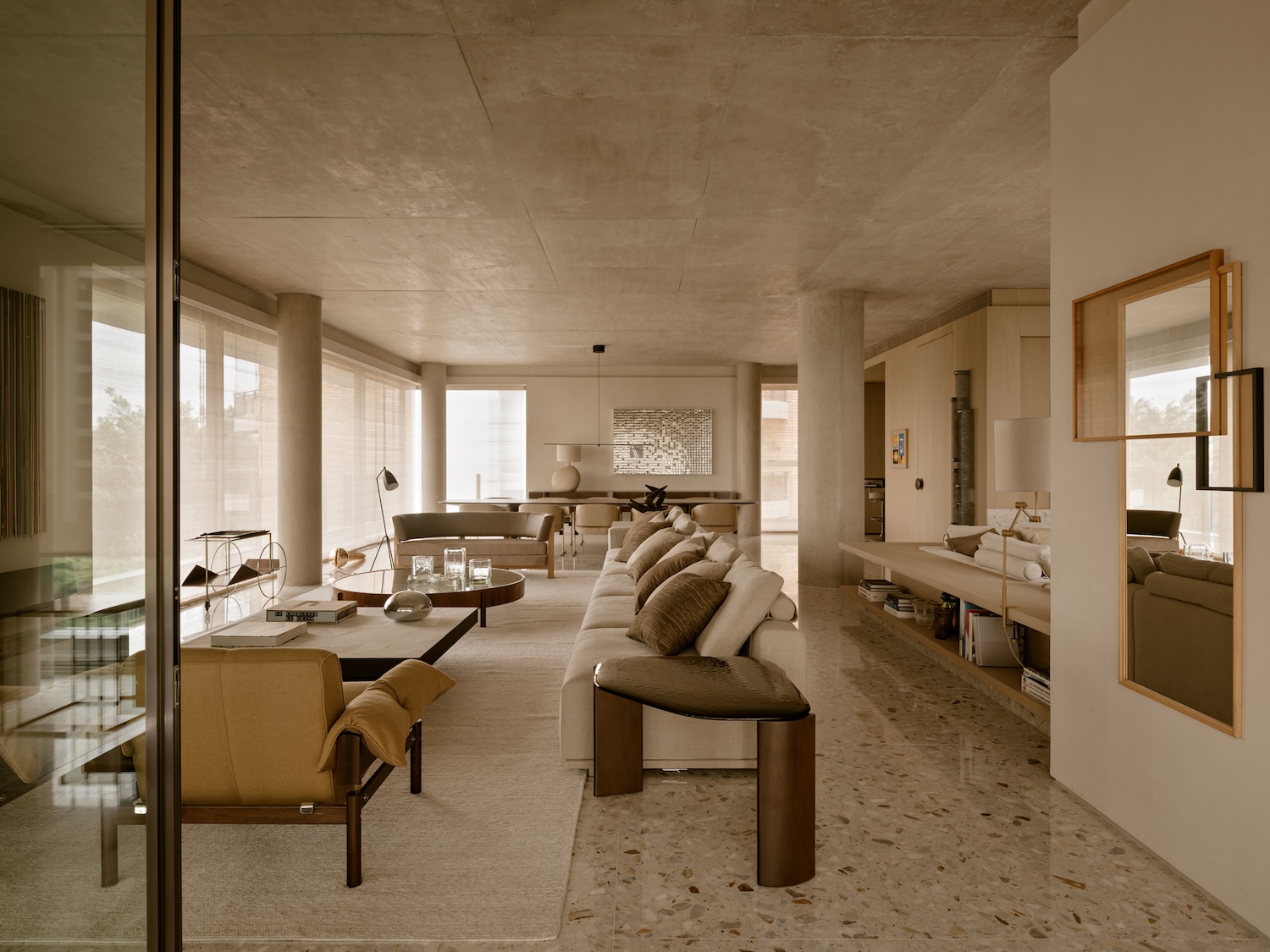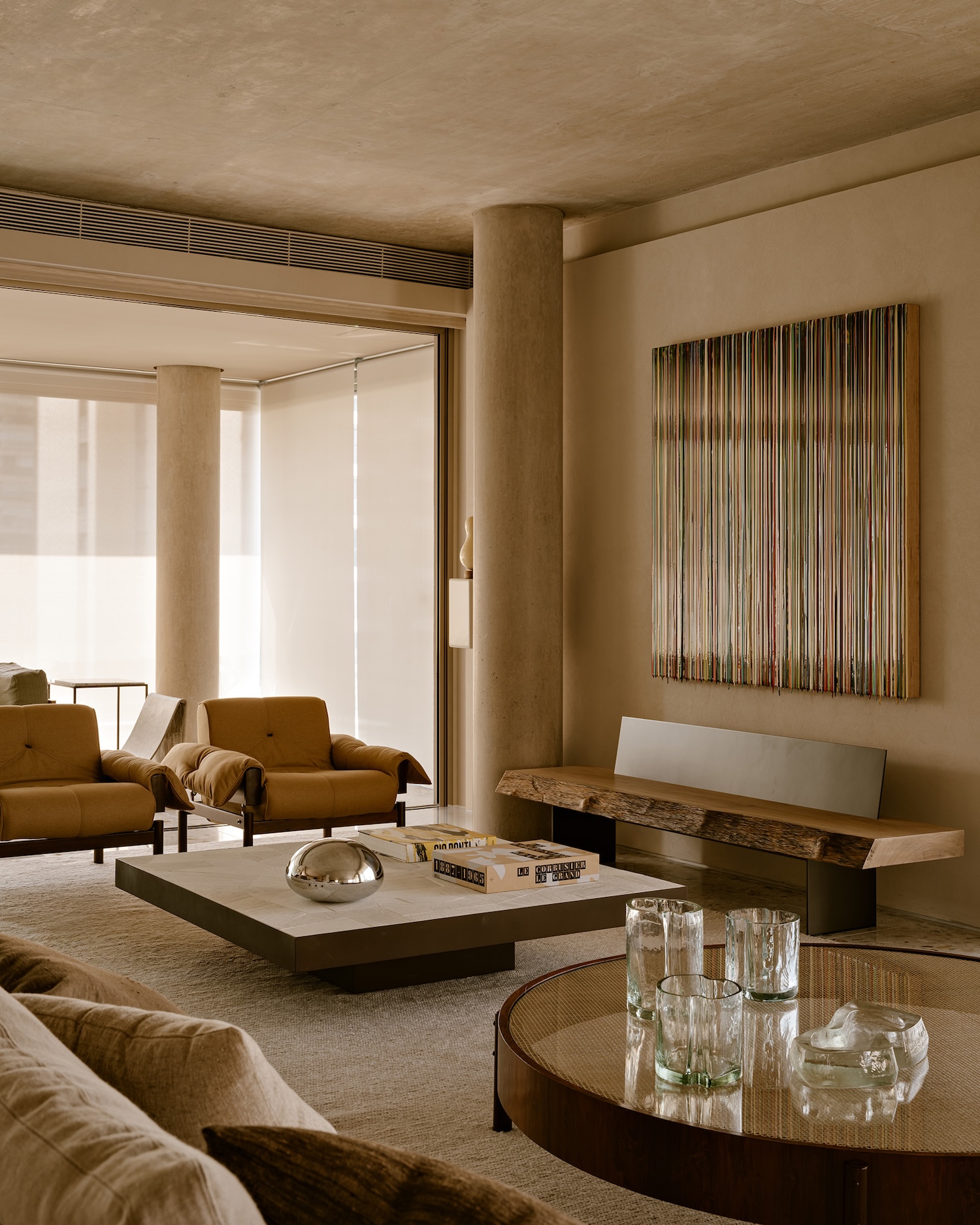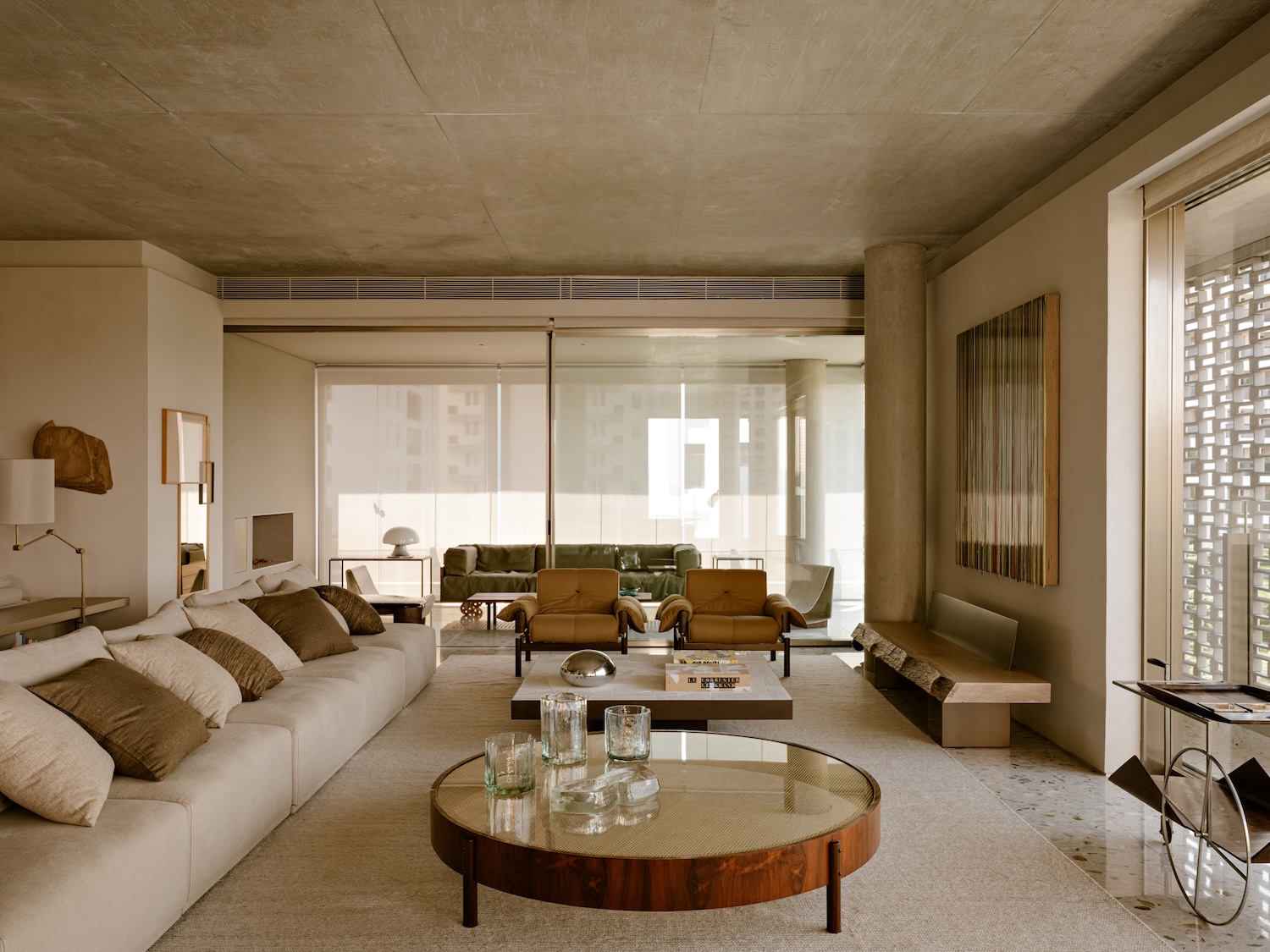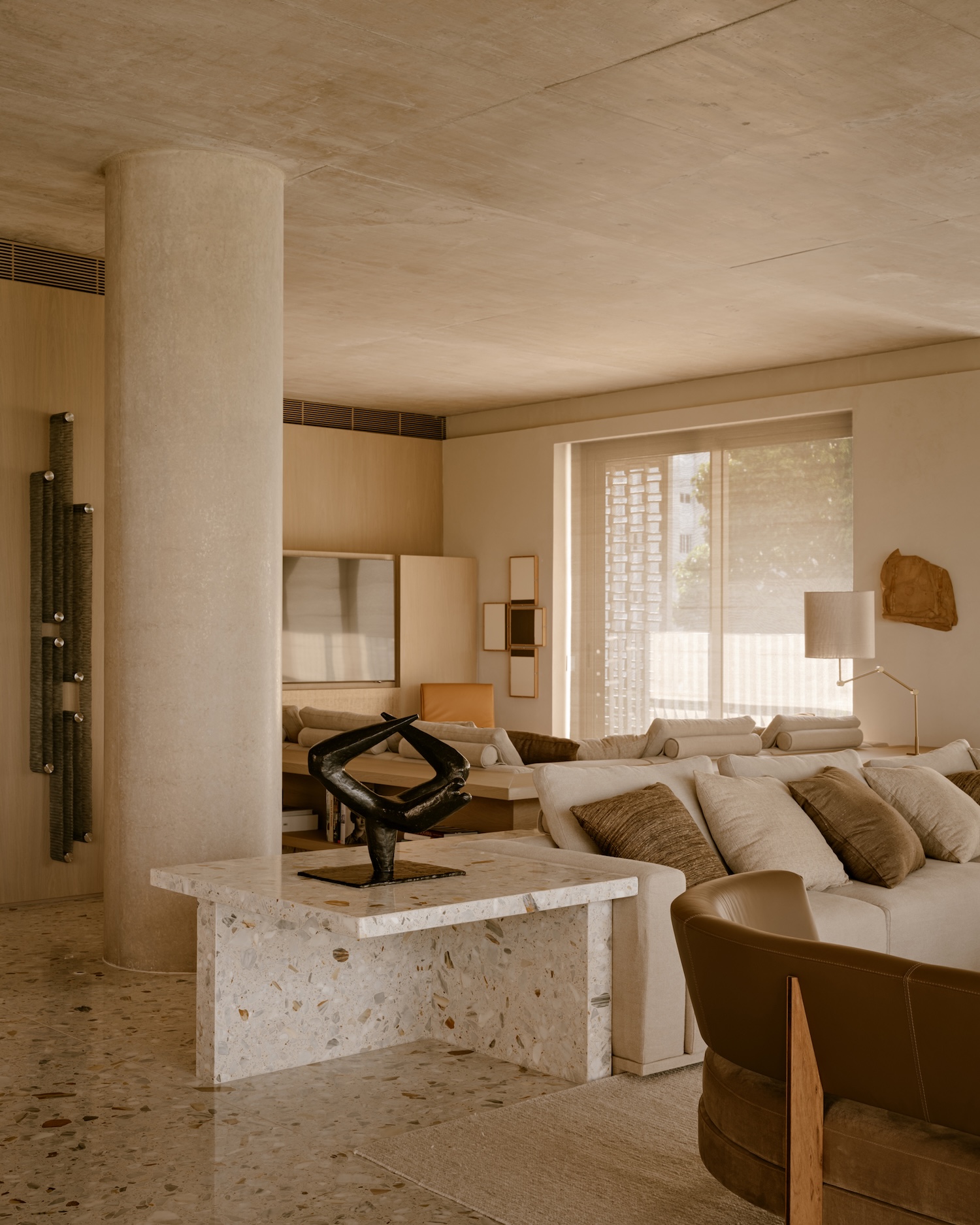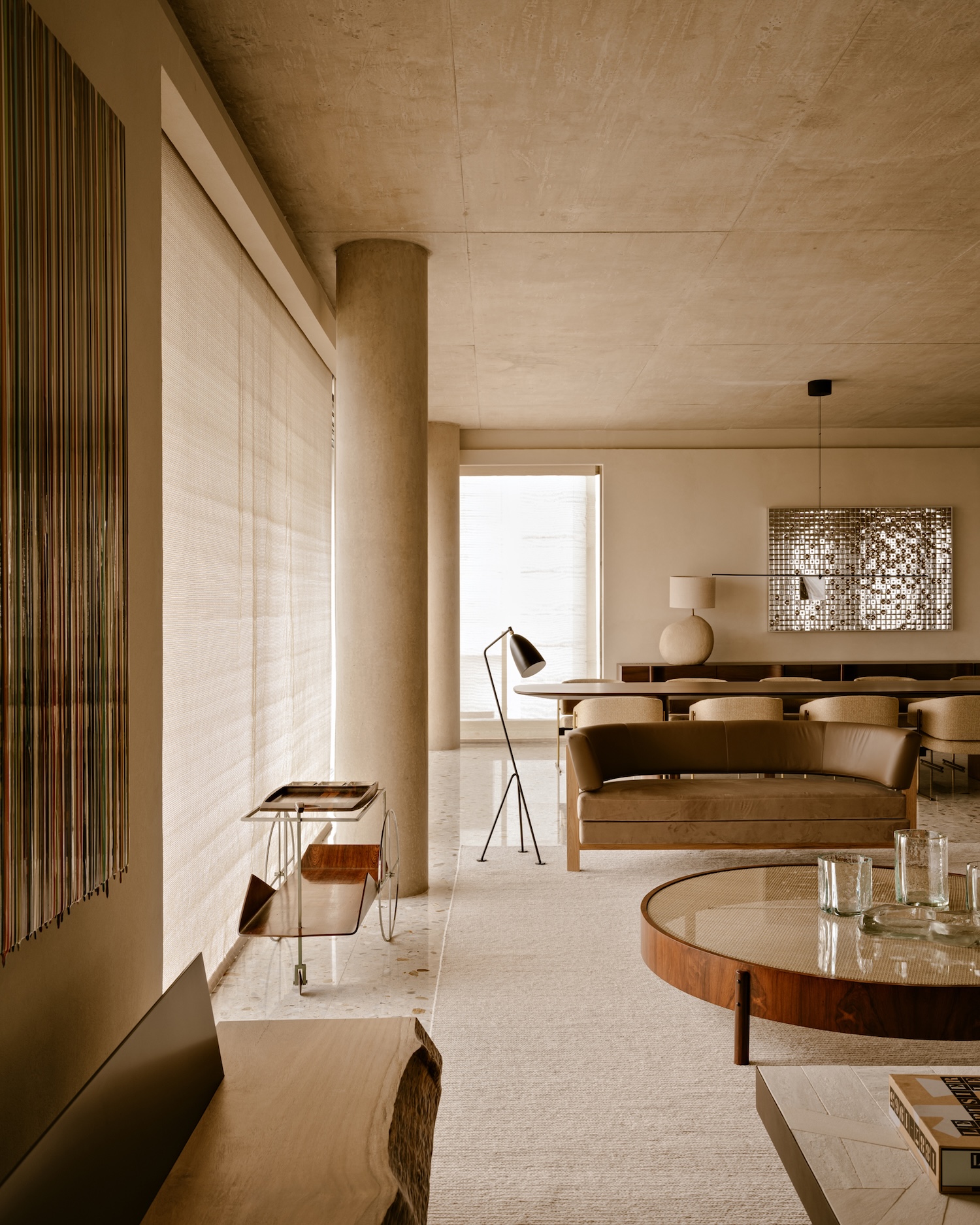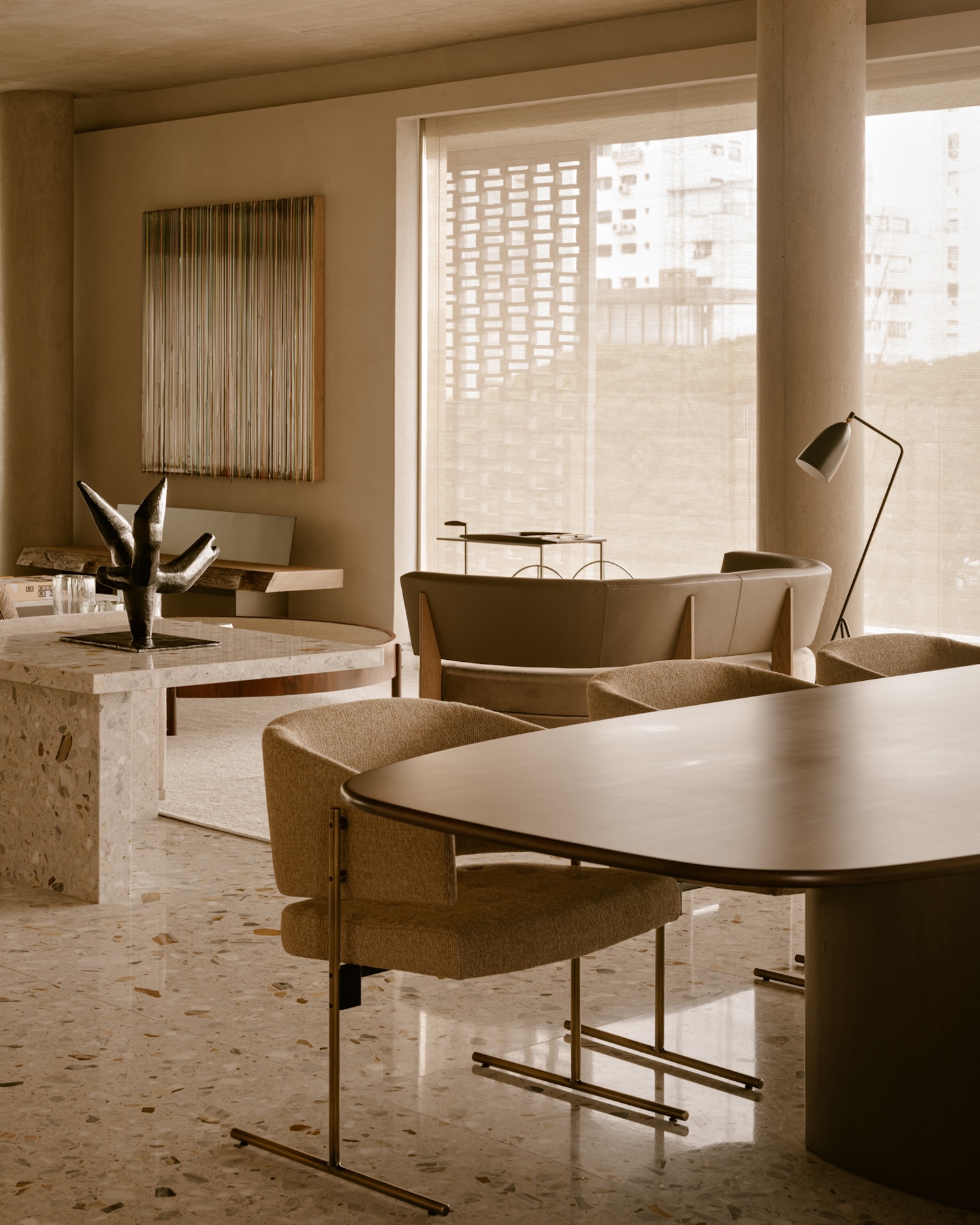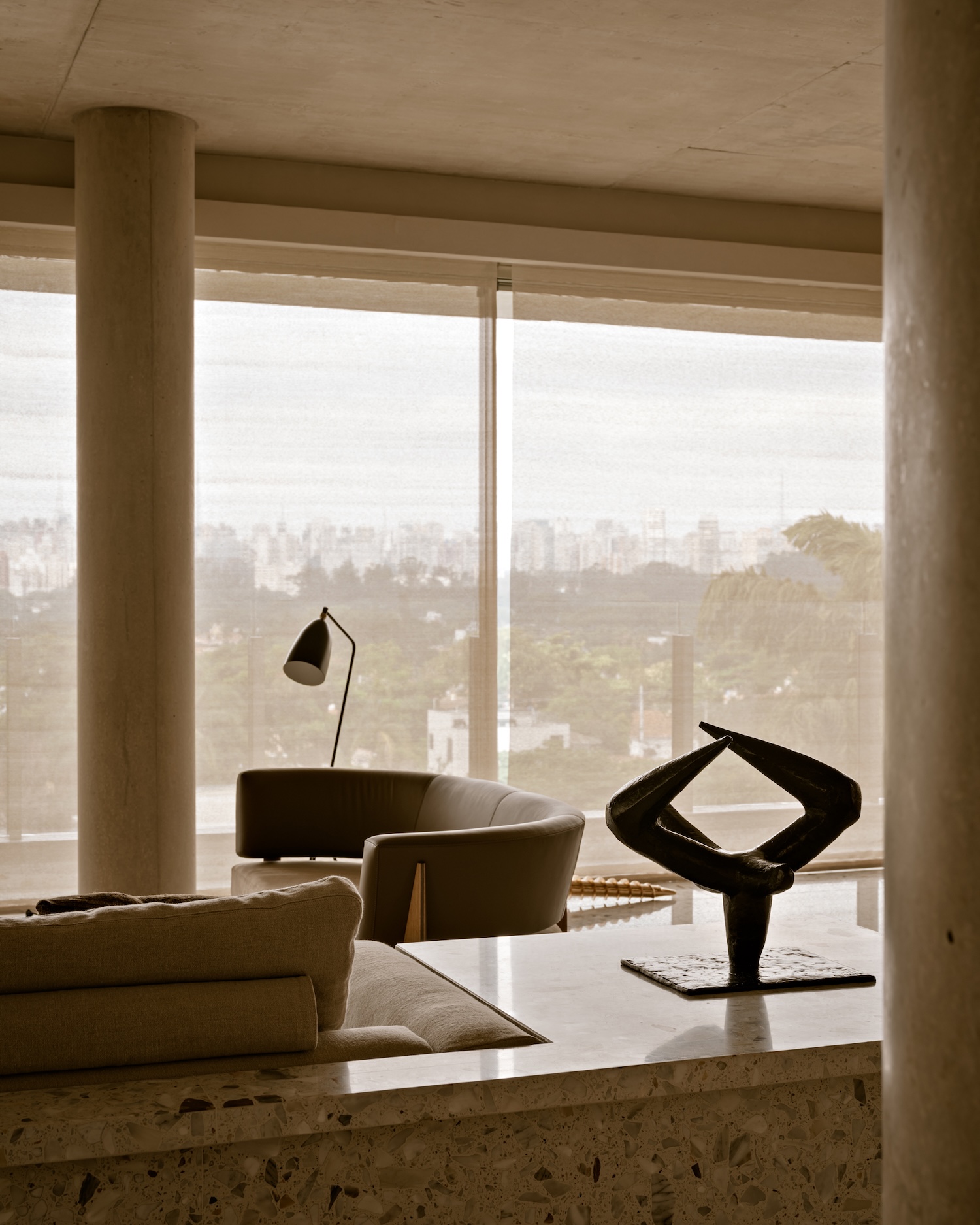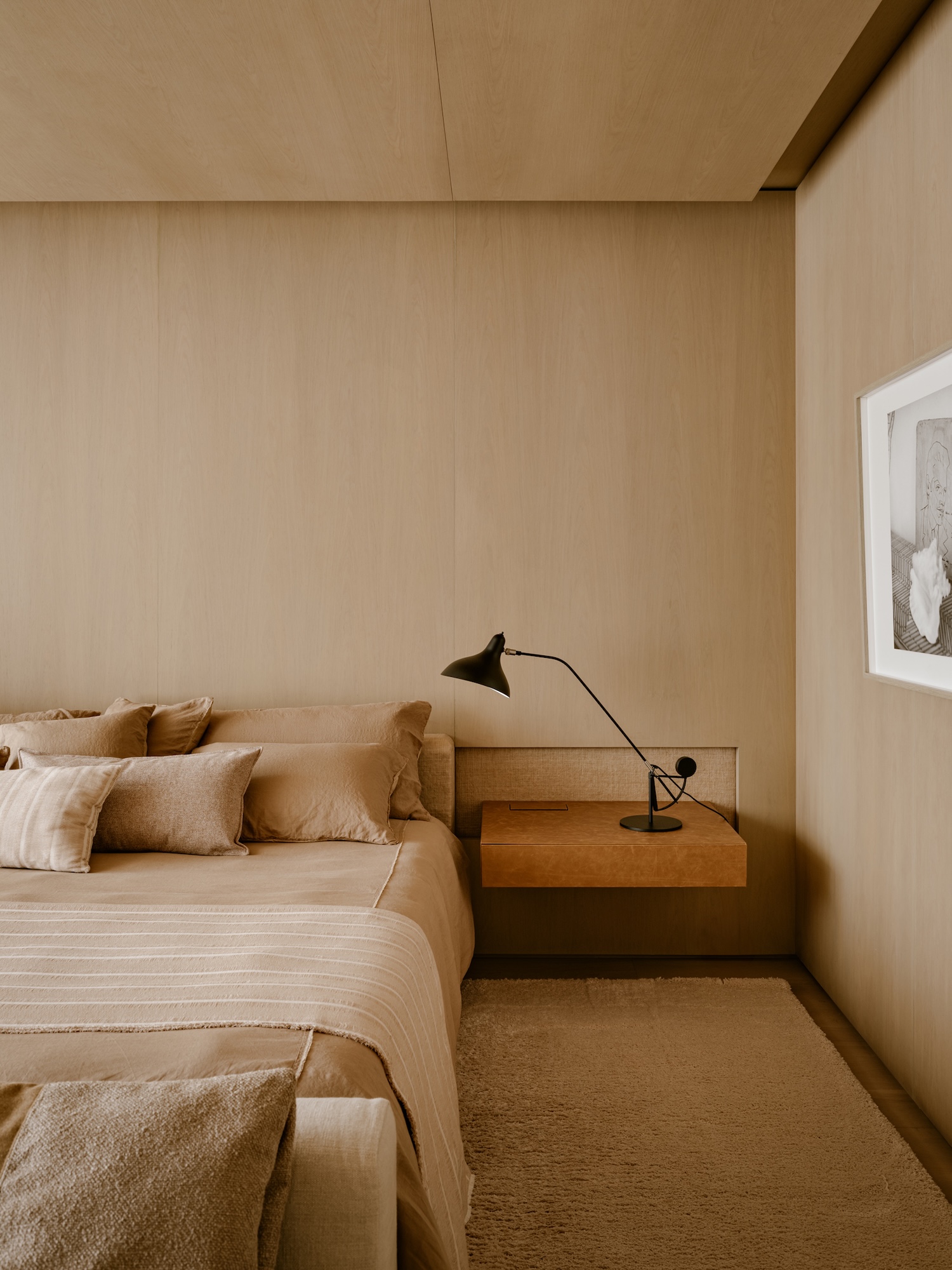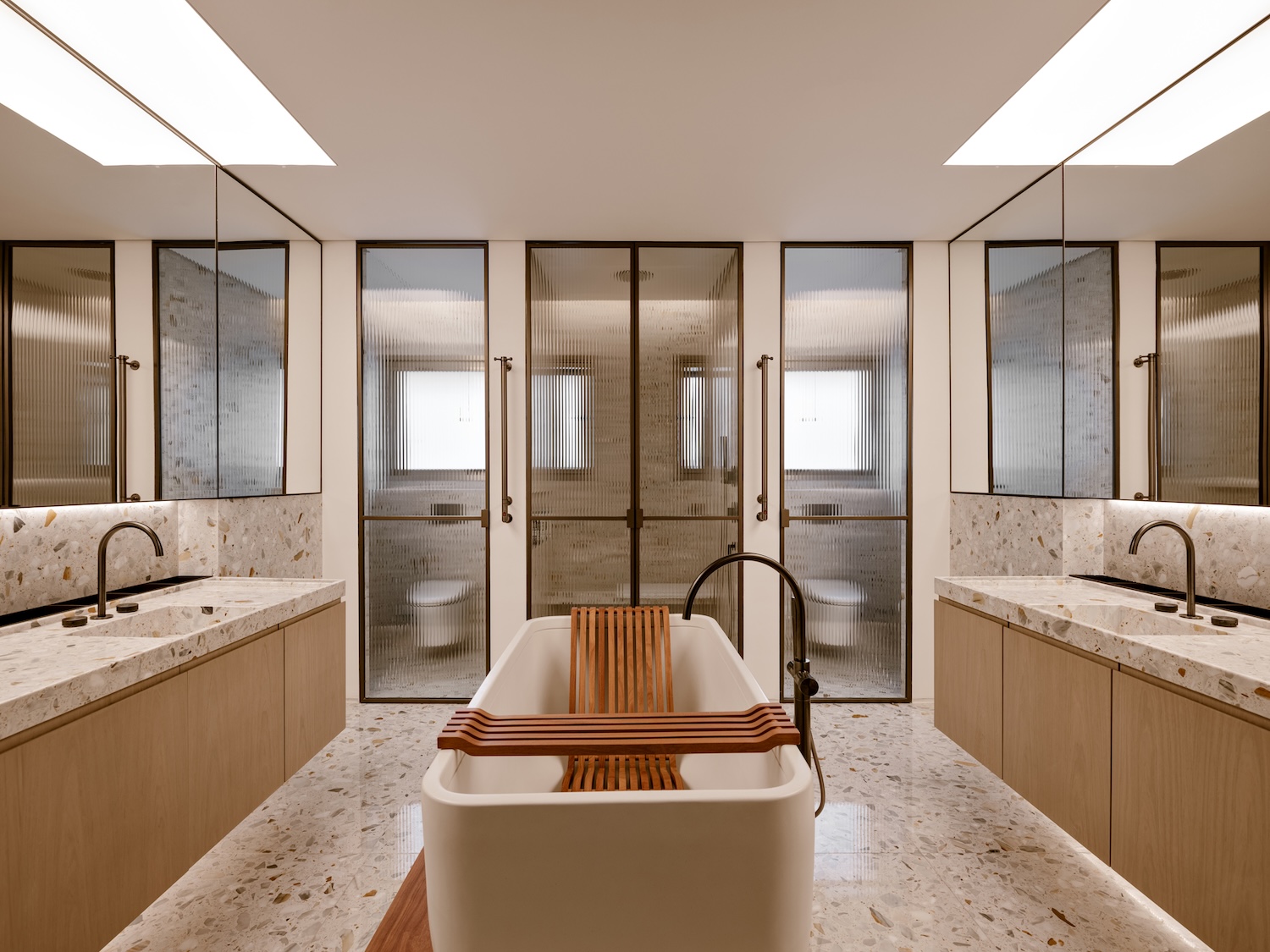Sete Apartment is a minimal apartment located in São Paulo, Brazil, designed by Arthur Casas. The terrazzo’s journey through the space speaks to a deeper understanding of how craft traditions can anchor contemporary living. This composite material, born from Venetian ingenuity and perfected through generations of Italian craftsmen, finds new expression in Casas’s hands. Here, it serves not as decorative flourish but as structural narrative, binding disparate spaces through its consistent presence while allowing each room to maintain its distinct identity.
“Coherence between the scales of a project is essential,” Casas explains, and this philosophy manifests most powerfully in his material choices. The exposed concrete ceiling, rather than being concealed, becomes a canvas for light play, while wood paneling provides the necessary counterpoint to stone’s coolness. This tension between industrial rawness and organic warmth reflects São Paulo’s own architectural DNA, where modernist principles meet tropical sensibilities.
The apartment’s dual nature as family gathering space and art gallery reveals how contemporary residential design must navigate multiple identities. The guest rooms’ transformation from home offices to grandchildren’s retreats speaks to a broader cultural shift toward flexible living. Custom low cabinetry conceals toys during the week, embodying the kind of thoughtful problem-solving that separates good design from great craft.
Most telling is Casas’s solution to the technical challenge of integrating modern systems within exposed concrete. The perimeter cove that conceals air conditioning and lighting represents more than clever engineering – it demonstrates how traditional building techniques can evolve to meet contemporary needs without sacrificing aesthetic integrity.
The Fusca sofa appears twice in the narrative, first embraced by the terrazzo console in the living area, then framed by custom woodwork in the home theater. This repetition with variation creates rhythmic coherence while acknowledging how the same piece can serve different purposes in different contexts. It’s a principle that extends beyond furniture to the entire project: materials and forms that maintain their essential character while adapting to new circumstances.

